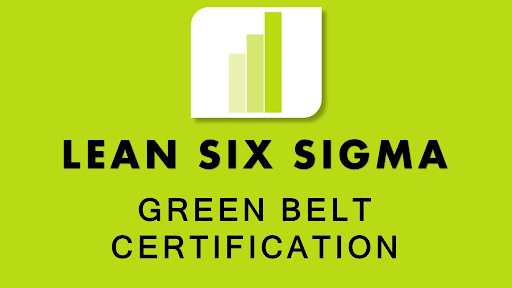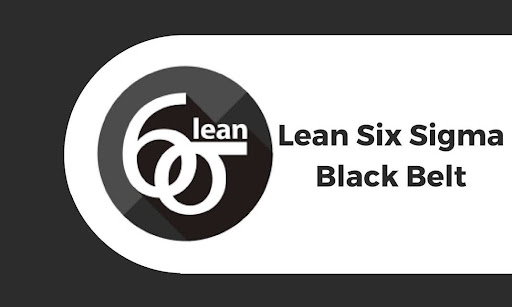From Beginner To Expert: How Green Belt Certification Builds Core Skills
Posted on on December 23, 2024 | by XLNC Team

Professional greatness can only be reached when learning is focused on growth. With a Lean Six Sigma Green Belt certification, you may improve your problem-solving and leadership skills while also streamlining the process. If you are new to Lean Six Sigma approaches or if you already have some understanding but need more insight, this program will educate you to cope with all of these complex scenarios and bring about meaningful change.
The Lean Six Sigma Green Belt program is meant to help professionals gain mastery of the concepts so that they can lead projects and assist black belt practitioners. Earning a Green Belt certification will teach you essential tools like DMAIC (Define, Measure, Analyze, Improve, Control), statistical analysis, and identifying the main reasons behind issues. This certification stands out because it emphasizes applying what you learn, helping you move from knowing concepts to using them in real situations.
Key Skills You'll Gain with Lean Six Sigma Green Belt Certification
1. Improving Your Problem-Solving Abilities
A big focus of the Lean Six Sigma Green Belt certification is to improve your problem-solving skills. The training teaches you about the DMAIC framework, which is a step-by-step method for fixing inefficiencies. With this knowledge, you'll be able to clearly state a problem, see how much it affects things, find out why it happens, make changes to fix it, and make sure the improvements last.
2. Data-driven decision-making.
A Green Belt certification improves your analytical abilities by teaching you how to acquire and interpret data efficiently. You'll learn how to use tools like Pareto charts, process mapping, and statistical analysis to help you make educated decisions that correspond with company objectives.
3. Growing Leadership Capabilities
As a Green Belt, you often manage modest to medium-sized projects that involve many teams. As a result, it helps you build leadership skills such as communication, team management, and stakeholder engagement. The ability to lead initiatives to their completion will distinguish you as someone who can consistently bring about change inside your organization.
Is Lean Six Sigma Green Belt Certification Beneficial?
1. Industry-wide Acceptance
The Lean Six Sigma Green Belt is globally recognized, making it a valuable tool in any sector. This certification will provide you with abilities that are applicable whether you work in manufacturing, healthcare, information technology, or finance.
2. Improved Career Opportunities
Employers value specialists who can add to efficiency and cost savings. Green Belt-certified professionals stand out in the job market, with options to work as a process improvement specialist, quality analyst, or project manager.
3. Higher Income Potential
Certification improves your employability and earnings potential. Industry surveys reflect that Lean Six Sigma certified professionals earn more than non-certified peers.
4. Practical Use
Getting a Green Belt certification helps you find waste, make processes better, and show clear results. These skills will not only help your workplace but also make you look more professional.
5. Align with Organizational Goals
Businesses are increasingly adopting Lean Six Sigma to be competitive in volatile marketplaces. A Lean Six Sigma Green Belt certification aligns you with these objectives, making you a valuable contributor to your organization's success.
6. Develop a Versatile Skill
This expertise obtained through green belt training is not confined to a certain sector or type of activity, and it may be used to improve supply chains, customer service, IT procedures, or anything else.
The Green Belt Path: From Newbie to Pro
1. Starting Out
You'll learn the basic ideas, words, and methods of Lean Six Sigma. This part teaches you how to cut waste and improve quality. The training is easy to follow, so even those with little experience can understand the basics.
2. Developing Intermediate Skills
The next step involves using Lean Six Sigma tools in real-life situations. You'll take part in practical activities and case studies that are similar to problems you might face at work. By managing small projects, you'll get practical experience and feel more confident in your skills.
3. Become an Expert
As you grow acclimated to continual practice and project engagement, you will become a skilled expert. Most green belts work on difficult projects alongside black belts and upper-level organizational executives to accomplish strategic goals. The skills you'll learn can then be employed as a competitive advantage for organizational growth.
Main Factors to Consider When Selecting a Training Programme
1. Certification
Make sure the training provider has certification from a trusted Lean Six Sigma organization. Certification ensures the course meets industry requirements.
2. Flexible Study Choices
Pick programs that give you options, like online classes or a mix of online and in-person learning. This helps you manage your studies and your job.
3. Hands-On Experience
Select a course that focuses on real-life practice. Practical training, actual projects, and guidance from skilled teachers will improve your learning.
Obtaining Lean Six Sigma Green Belt Certification
not only provides credentials but also promotes professional advancement and positively influences enterprises. From mastery of problem-solving methodologies to recognition as a process improvement leader, each stage of the journey from novice to master is extremely gratifying.
If you're eager to advance your profession, start looking into Green Belt training programs immediately. With the correct supervision and determination, you can develop key abilities that will set you apart in today's competitive corporate environment.
Search
Latest Blogs
-
 Certified Ethical Hacker (CEH) Online Training Advance Your Cybersecurity Skills
Certified Ethical Hacker (CEH) Online Training Advance Your Cybersecurity Skills
-
 Which Scrum Master certification ASM, PSM or CSM
Which Scrum Master certification ASM, PSM or CSM
-
 Is Getting a Six Sigma Black Belt Worth It Pros ,Cons and Career Impact
Is Getting a Six Sigma Black Belt Worth It Pros ,Cons and Career Impact
-
 Generative AI Course 2025 for Software Developers and Engineers
Generative AI Course 2025 for Software Developers and Engineers
-
 Top Black Belt Certifications and Training for Quality Managers to Drive Organizational Excellence
Top Black Belt Certifications and Training for Quality Managers to Drive Organizational Excellence
-
 Data Science Syllabus and Subjects: What You Should Know Before Choosing a Course
Data Science Syllabus and Subjects: What You Should Know Before Choosing a Course
-
 What is the difference between ITIL and Scrum certifications
What is the difference between ITIL and Scrum certifications
-
 Six Sigma certification: The six-level path to Master Black Belt
Six Sigma certification: The six-level path to Master Black Belt


